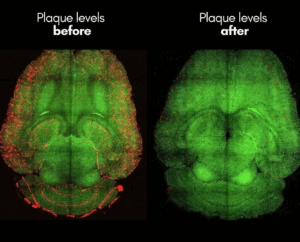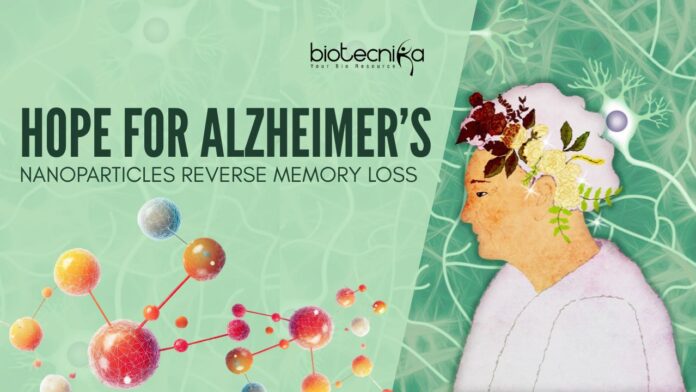Nanoparticles for Alzheimer’s Treatment – Can This Reverse Memory Loss?
Science is not just a subject, but a constant way of understanding the processes of life. A new research, a remarkable breakthrough from the scientists of China and Spain. A cure for Alzheimer’s! Yes, you heard it right. This novel finding could pave the way for a revolutionary treatment for the life-altering disease. Using Nanoparticles for Alzheimer’s treatment?
Alzheimer’s is a progressive brain disease that gradually affects memory, thinking, and the ability to carry out everyday activities. It is the most common form of dementia and usually develops in older adults. Alzheimer’s is caused due to the buildup of unusual proteins in the brain: Amyloid beta plaques and Tau Tangles. These proteins permanently damage and kill the brain cells. As a result, the activity of the brain becomes nil as the disease progresses. The exact process is yet to be uncovered. Other factors, such as genetics, age, lifestyle, and overall health, can also increase the risk of developing the disease.
In a study published in Signal Transduction and Targeted Therapy, the researchers demonstrated that specially engineered Nanoparticles can not only clear the toxic plaques but also reverse the memory loss in mice. The results were astonishing. The nanoparticles cleared up about 60% of the harmful proteins from the brain in just three doses of the injection, within one hour of administration.

The story doesn’t end here. What happened afterward is truly remarkable. The mice that once struggled with cognitive problems began to perform normally, like healthy animals, within 6 months. This milestone recovery aided the scientists to understand that the nanoparticles not only removed the toxic proteins from the brain but also have the property to repair the brain’s blood-brain barrier (BBB). The BBB serves as a protective shield or a filter, regulating the passage of substances in and out of the brain. In the case of Alzheimer’s patients, this barrier is often damaged and allows the buildup of harmful components.
These Nanoparticles work like a “supramolecular drug”, meaning they do more than just carry medicine; they help the brain restore its natural cleansing system. The key mechanism is the reactivation of the LRP1, a protein that helps remove waste from the brain. By reactivating LRP1, the nanoparticles improved blood flow, reduced inflammation, and effectively allowed the brain to heal itself.
While the current results are limited to animal models, this study could be a game-changer. At present, slowing down the disease progression and managing the symptoms serve as the treatment for Alzheimer’s. But this nanoparticle approach could potentially reverse the underlying pathology. If similar outcomes can be achieved in humans, it could transform the way Alzheimer’s and other neurodegenerative diseases are treated.























